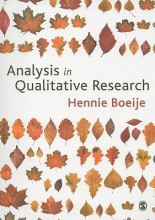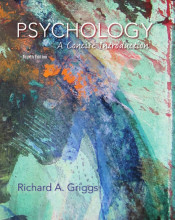Obsessive-compulsive-related and trauma-related disorders
31 important questions on Obsessive-compulsive-related and trauma-related disorders
Describe the key features of obsessive compulsive disorder
- repetitive, intrusive, uncontrollable thoughts or urges (obsessions)
- repetitive behaviors or mental acts that the person feels compelled to perform (compulsions)
Describe the key features of body dysmorphic disorder
- preoccupation with imagined flaw in one's appearance
- excessive repetitive behaviors or acts regarding appearance
Describe the key features of hoarding disorder
- acquisition of an excessive number of objects
- inability to part with those object
- Higher grades + faster learning
- Never study anything twice
- 100% sure, 100% understanding
When can someone be diagnosed with obsessive-compulsive disorder?
- presence of obsessions or compulsions
- obsessions or compulsions are time consuming (1h/day) or cause clinically significant distress or impairment
What are frequent obsessions?
- fear of contamination
- sexual or aggressive impulses
- body problems
- religion
- symmetry or order
What are frequent compulsions?
- pursuing cleanliness or orderliness, sometimes through elaborate rituals
- performing repetitive, magically protective acts
- repetitive checking
What are the dsm 5 criteria for body dysmorphic disorder?
- preoccupation with one or more perceived defects in appearance
- others find the perceived defects slight or unobservable
- the person has performed repetitive behaviors or mental acts in response to the appearance concerns
- preoccupation is not restricted to concerns about weight or body fat.
What are the dsm 5 criteria for hoarding disorder?
- persistent difficulty discarding or parting with possessions, regardless of their actual value
- perceived need to save items
- distress associated with discarding
- symptoms result in accumulation of a large number of possessions that clutter active learning spaces to the extend that their intended use is compromised unless others intervene.
What are the brain regions associated with OCD and related disorders?
- ocd; orbitofrontal cortex, caudate nucleus, and anterior cingulate unusually active
- BDD; hyperactivity in orbitofrontal cortex and caudate nucleus
- horading; hyperactivity in orbitofrontal cortex
What is the heritability of ocd, hoarding, and bdd?
How do we call the subjective feeling of knowing you havr thought enoug, cleaned enough, or in other ways done what you should to prevent chaos and danger from low-level threats in the environment?
What is a cognitive model for compulsions?
- OCD is related to a deficit in the intuitive sense of feeling security and closure
- people suffering from OCD have a deficit in yedasentience
- compulsions are reinforcing because they help relieve the sensation of uncompleteness, and do so even more than self-statements do.
How does the thought suppression model of obsessions work?
- people with OCD may try harder to suppress their obsessions than other people and, in doing so, may actually make the situation worse (instead think about it more, or engage in compulsions to prevent things happening)
- people with OCD tend to;
- think that thinking about something makes it more likely to occur
- have deep feelings of responsibility
- consequently people with ocd engage more in thought suppression.
What is the cognitive model for BDD?
- people with BDD tend to be detailed oriented, this influences how they look at facial features
- examining one feature at a time makes it more likely they will become engrossed in considering a small flaw.
- also consider attractiveness to be more important
- think self-worth is exclusively dependent on their appearance.
Describe the cognitive behavioral model of hoarding disorder
- hoarding is related to poor organizational abilities, unusual beliefs about possessions, and avoidance behaviors
- problems with attention interfere staying focused on tasks, even when focused, difficulty categorizing objects and making decisions
- these difficulties make it hard to organize and remove excessive possessions
- plus extreme emotional attachment to possessions
- organizing the clutter is so overwhelming that avoidance is main strategy.
What medication is used to treat OCD and related disorders?
clomipramine for ocd (antidepressant too)
Which psychological treatments to OCD are there?
- exposure and response prevention
- cognitive approaches
- deep brain stimulation
Describe the exposure and response prevention therapy for OCD, BDD, and hoarding.
- people expose themselves to situations that elicit the compulsive act and then refrain from performing compulsive ritual.
- not performing ritual exposes person to full force of the anxiety provoked by the stimulus
- the exposure promotes the extinction of the conditioned response (anxiety)
How do we call in exposure therapy exposing a client at first to less threatening stimuli, and gradually intensifying the threat of the stimuli?
Describe the cognitive approach to OCD
- focus on challenging people's beliefs about what will happen if they do not engage in rituals
- challenge their inflated sense of responsibility
Which psychological treatments for hoarding disorder are there?
- exposure response therapy
- cognitive behavioral treatment
- family approached treatment
How do we call an extreme response to a severe stressor, including recurrent memories of the trauma, avoidance of the stimuli associated with the trauma, negative emotions and thoughts, and symptoms of increased arousal?
What are the dsm 5 criteria for ptsd?
- exposure to a serious trauma
- at least one intrusion symptom
- at least one avoidance symptom
- at least two negative alterations in cognition and mood symptoms after event
- at least two changes in arousal and activity
What are the intrusion symptoms of PTSD according to the DSM 5
- recurrent, involuntary, and intrusive distressing memories of the trauma
- recurrent distressing dreams related to the event
- dissociative reactions in which the individual feels or acts as if the trauma were recurring
- intense or prolonged distress or physiological reactivity in response reminders of the trauma.
What are the avoidance symptoms of PTSD according to the DSM 5
- avoids internal reminders of the trauma
- avoids external reminders of the trauma
What is the difference in Acute Stress Disorder and PTSD?
- symptoms are similar
- ASD symptoms last for 3 days to a month, PTSD at least a month
Two thirds of the people with PTSD have a history of an anxiety disorder, what are the similarities of PTSD and anxiety disorder?
- many risk factors for PTSD overlap with risk factors for anxiety disorder
- PTSD has been related to Mowrer's two factor model of conditioning
- appears to be related to dysregulation of the fear circuit
What factors of the trauma determine wether it will cause PTSD?
- the severity of the trauma
- nature of the trauma; trauma caused by humans is more likely to cause ptsd, than trauma by natural disaster
How is the hippocampus involved in PTSD?
- the hippocampus is smaller in people with PTSD
- these deficits could increase the risk that a person will respond to reminders of the trauma even when they occur in safe contexts
- these deficits may interfere with coherent narratives about the trauma.
What are ways to cope with trauma?
- dissociation; feeling removed from one's body or emotions, or not remembering the event)
- protective factors like high intelligence and strong social support help.
What are treatments for ASD?
- cognitive behavioral approaches to reduce changes on PTSD
The question on the page originate from the summary of the following study material:
- A unique study and practice tool
- Never study anything twice again
- Get the grades you hope for
- 100% sure, 100% understanding
































